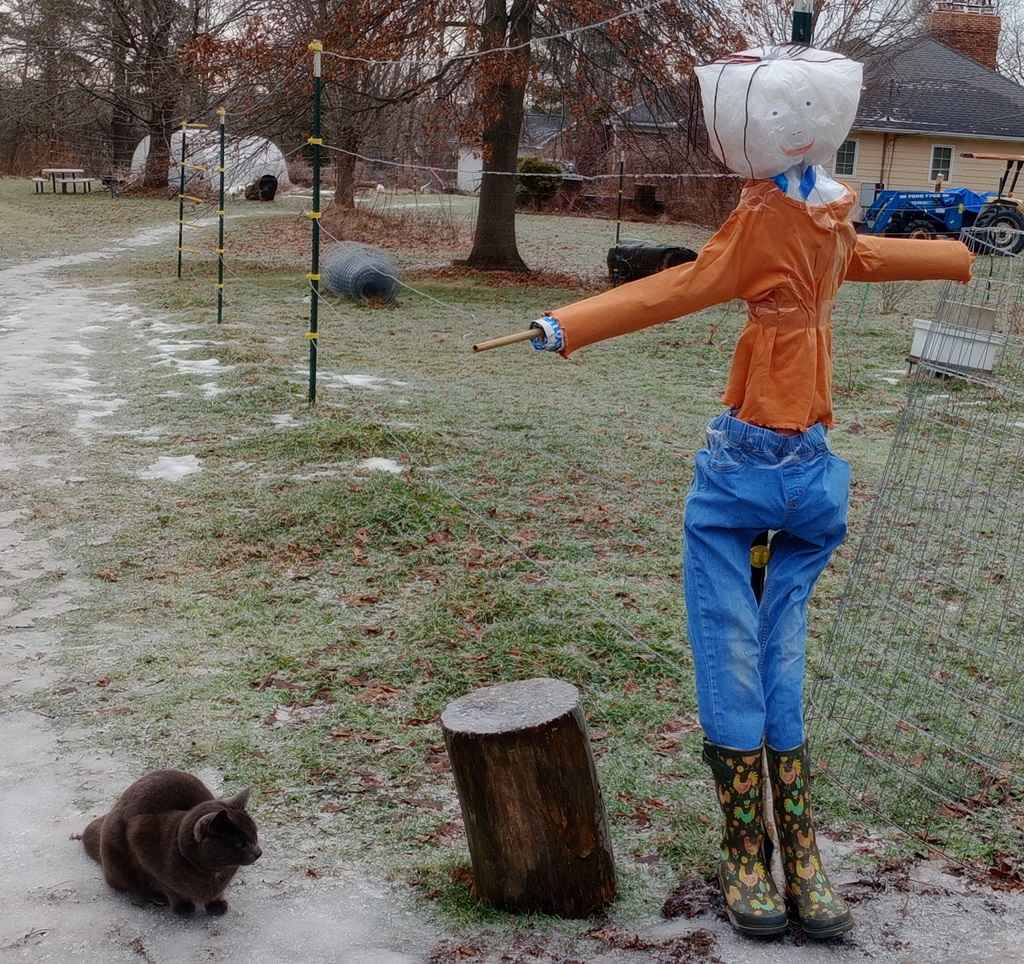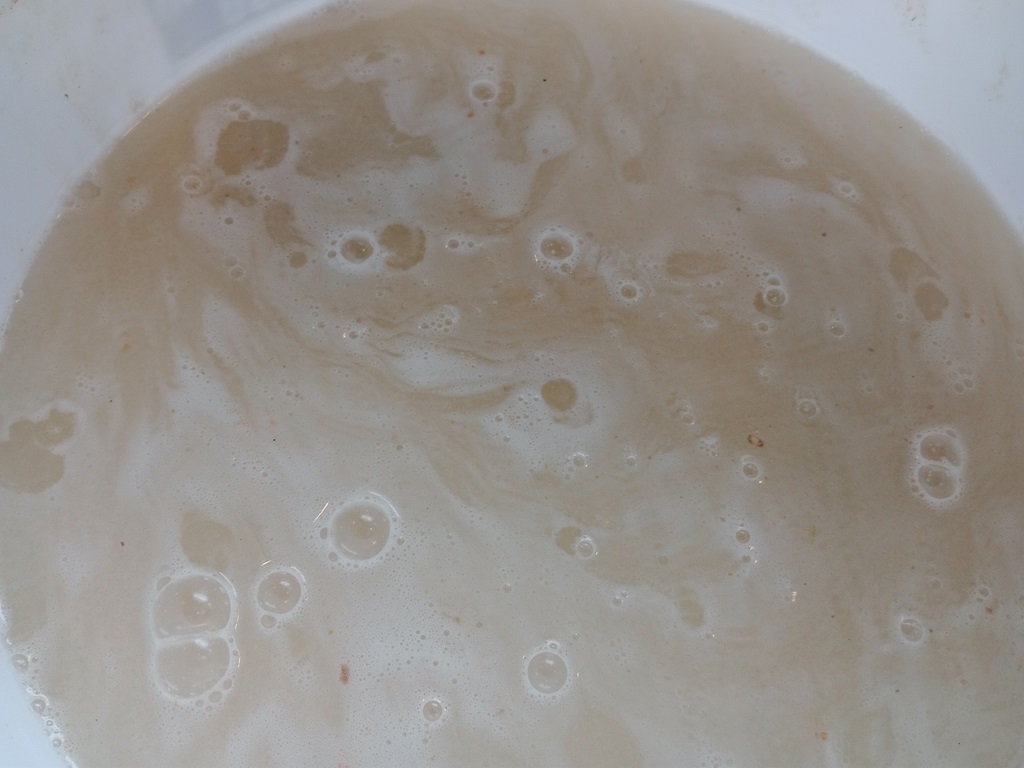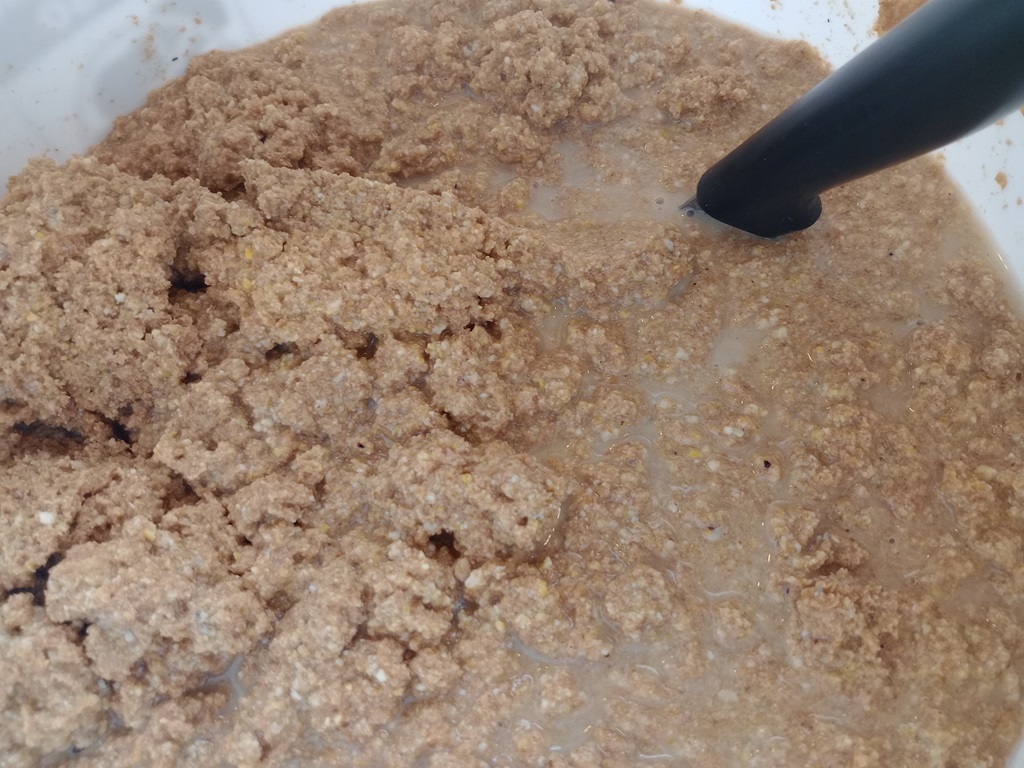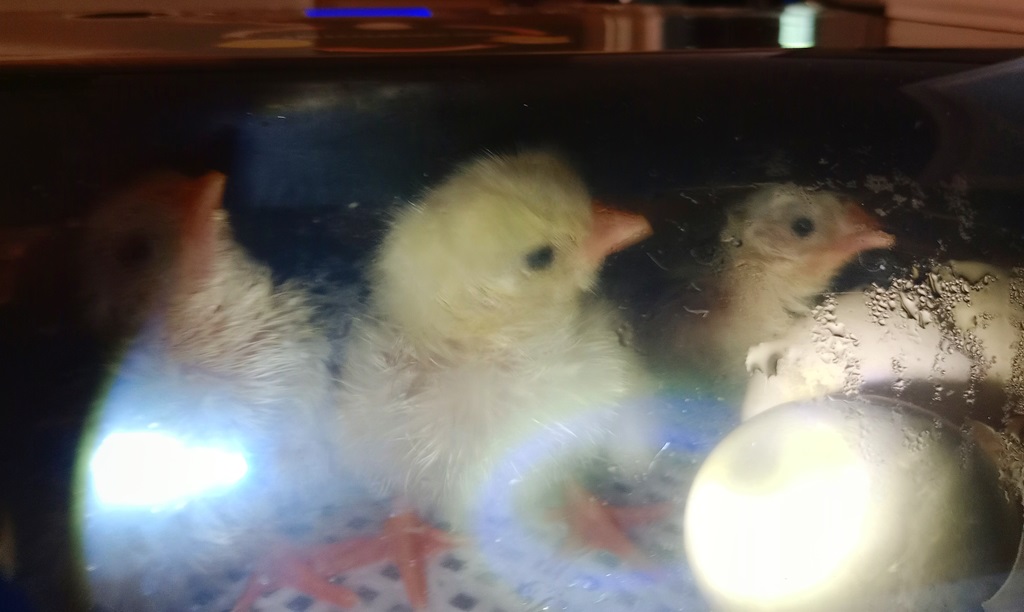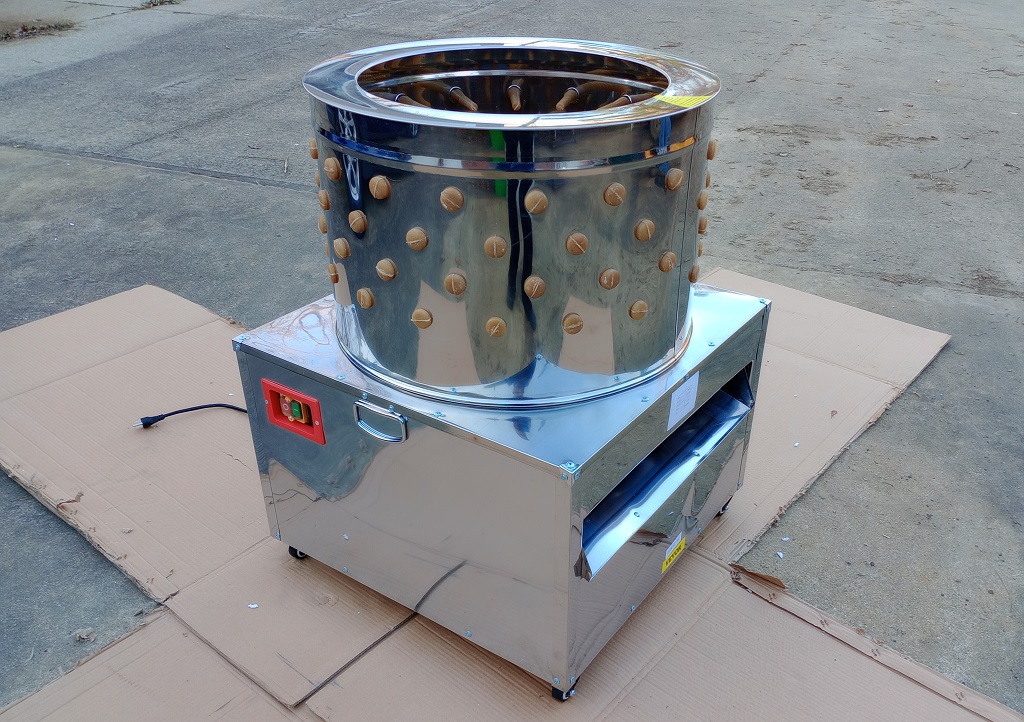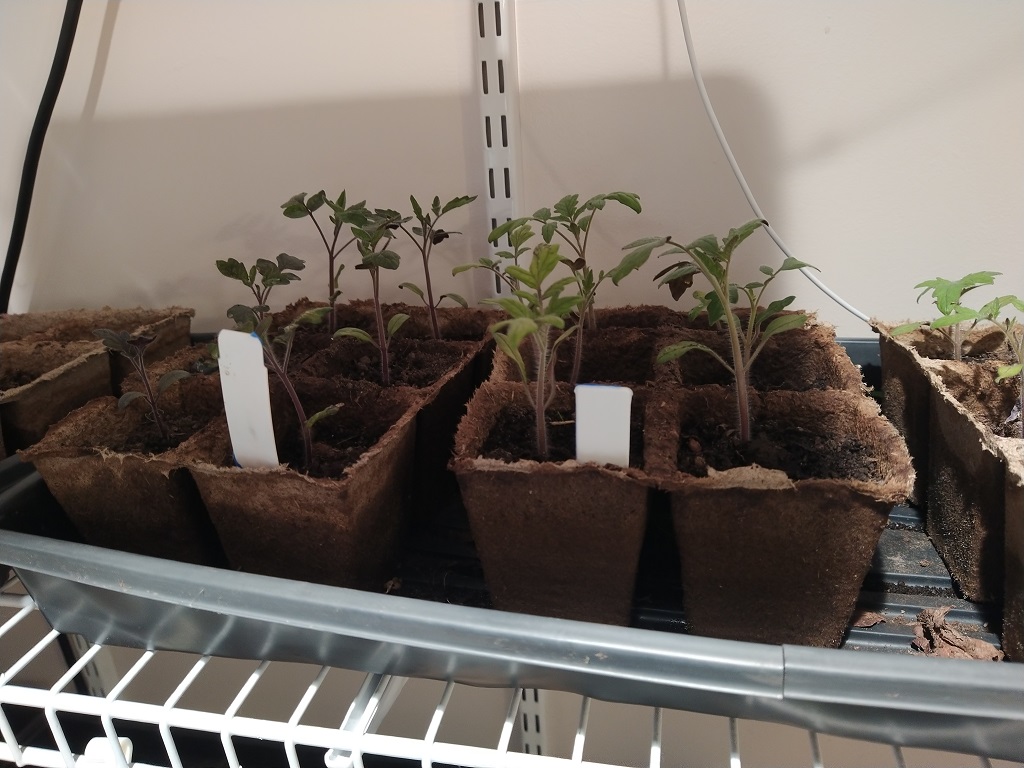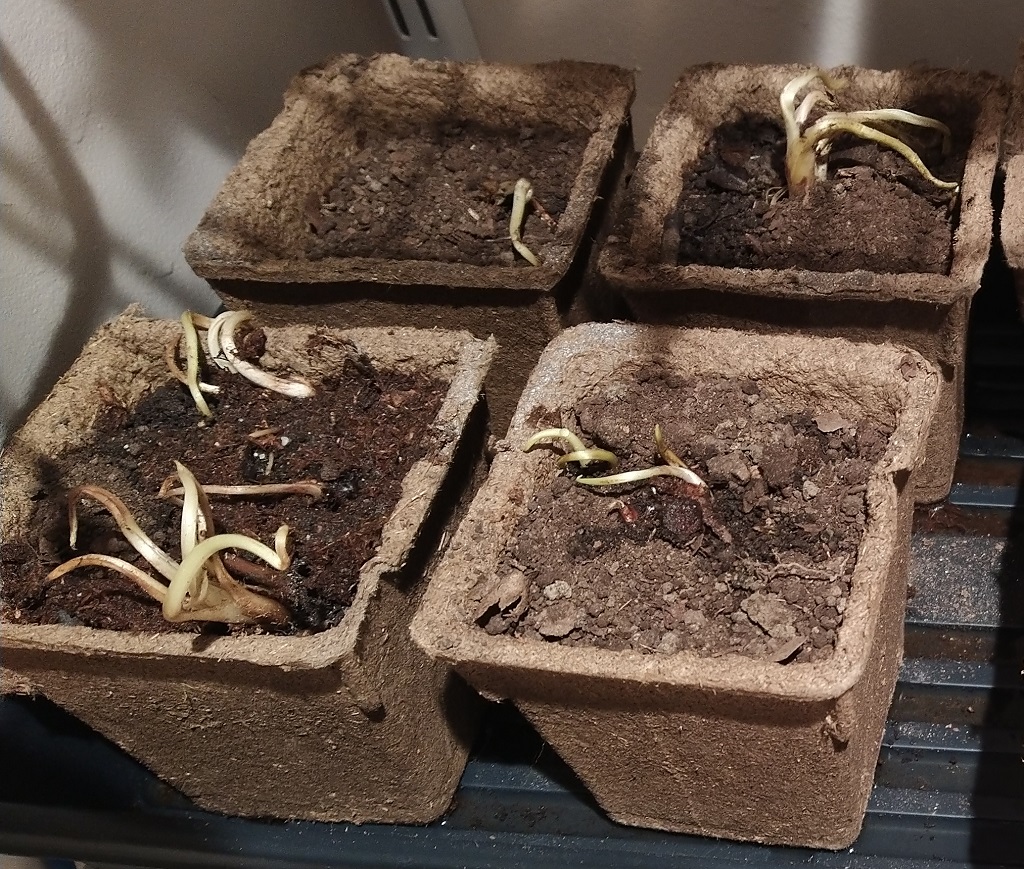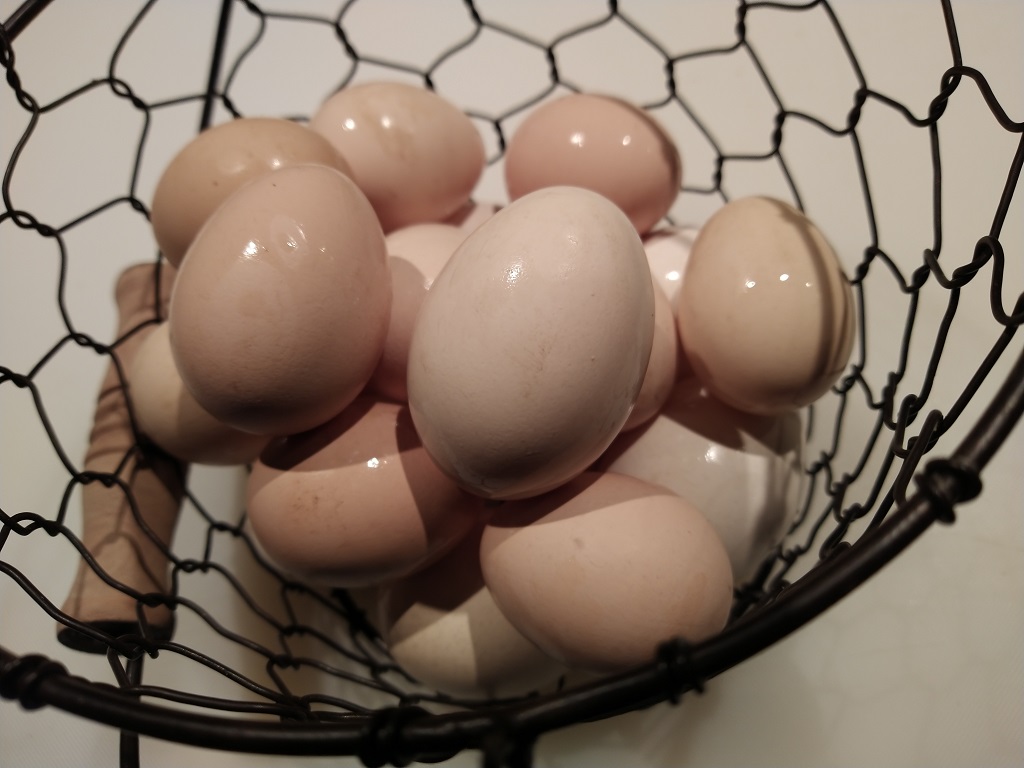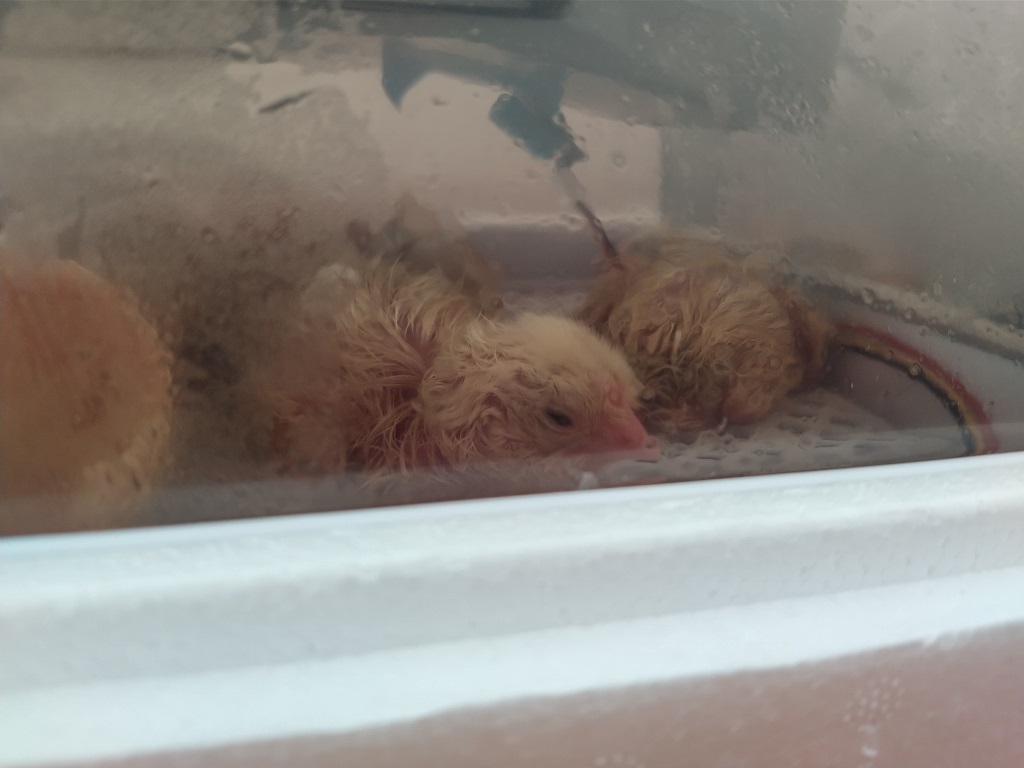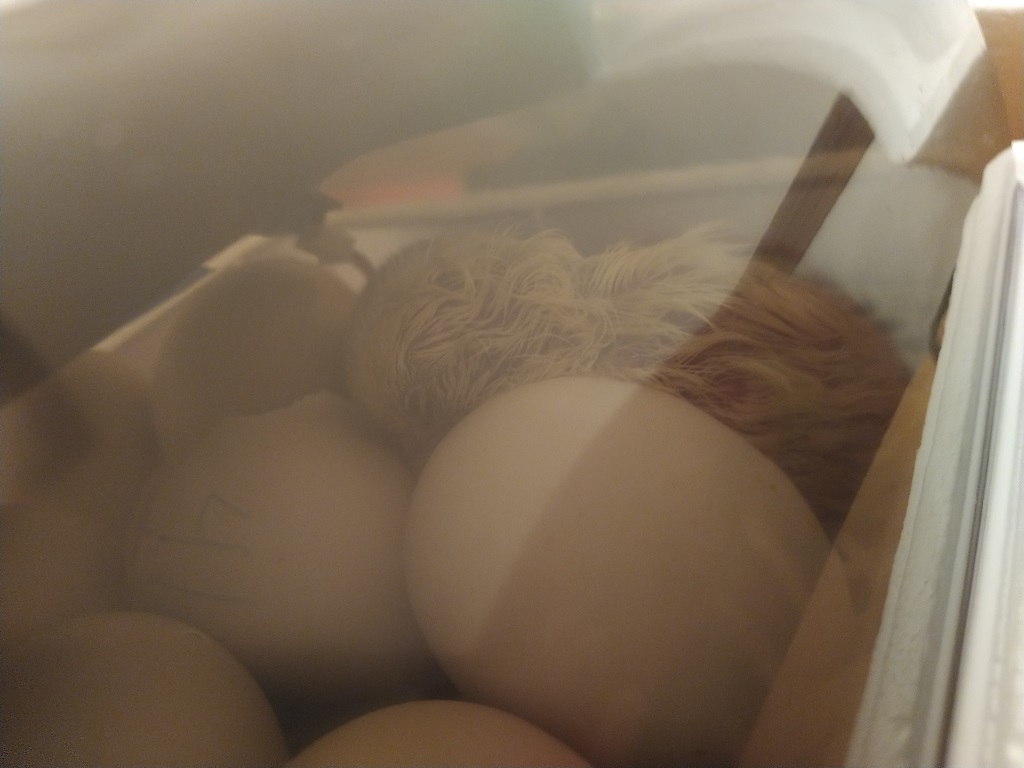I’m not sure if it is because the winter has been particularly cold or the local lake is drained and the ecosystem is disrupted … but we’ve never had a problem with hawks and eagles until this year. For most of the year, the buzzards keep them away. But this month! We lost a duck to a hawk — I came around the corner and saw the thing eating a duck. A week or so later, two ducks were missing and big feathery spots were in the duck yard. We put a small radio tuned to a talk station out in the duck yard — which seems to have helped there, but we lost two chickens today. I think a rooster tried to rescue the hen and was taken out. So Anya spent the day making scarecrows for both the duck and chicken yard. I mounted old CDs around the fence.
Category: Chickens
Overnight Fermented Chicken Feed
I constantly read how awesome it is to ferment the chicken feed — except we’ve got a lot of birds, and it is cold outside (or hot) much of the year. So we would need a row of five-gallon buckets inside the house to manage the approaches I’ve seen where the feed sits and ferments for three to five days before it is used. I was curious how much fermentation you could get in 24-hours if you had some starter. So I took a scoop of chicken feed into the house & added a bunch of water. I let it sit on my nice, warm countertop for a few days. Then I put a day of food into a five gallon bucket & added my starter. Poured water over the whole lot of it & let the one bucket sit until I was going to feed the chickens the next morning.
Result? It’s got a nice sour/sweet aroma, was bubbling happily, and was well hydrated. The birds love the chicken food mash anyway, and a nice bucket of 70 degree mash on a cold winter day seemed like a nice treat even if the fermentation hadn’t gone anywhere. But it worked! I pull about a quart of the fermented feed to use as a starter, bring the bucket out to feed the birds, add more pellets to my empty bucket, pour the starter in, and cover it all with water until tomorrow when I do the same thing all over again.
2024 Hatch — Chickens
Chicken Plucker
We got a chicken plucker for processing birds this year — the metal on the base is really thin, the motor appears to have come pre-rusted, and they somehow consistently put one of the rubber sticks in upside down (although, after using it, we think this might be intentional and kind of “sweep” the feathers from underneath out the shoot).
We have been very hesitant to buy one of these — they are expensive. But it takes us so much time to butcher birds. I see videos on YouTube of people plucking a bird in five minutes. That’s not us. At first, I thought maybe it was a “get better with practice” sort of thing. Or that we weren’t scalding enough. Or that we were doing something else wrong. But it’s been years. We’re not getting much quicker, the scald is fine, and the only thing we might be doing wrong is being too picky about what constitutes “plucked”.
The biggest hurdle was that we couldn’t really see one work to determine if we’d be done defeathering in a minute or if we’d still be spending half an hour plucking feathers. There wasn’t a good way to find out, though. People post videos online, but they also post videos of themselves plucking a bird in a few minutes. So that’s not really trustworthy. We finally decided to just spend money and buy a plucker. They work! There may be a few big wing feathers to pull. There may be a few smaller feathers near the feet. But the bird was plucked within a few minutes. It takes me about fifteen minutes to butcher a bird, and Scott was able to get a bird to the “ready to be butchered” point in fifteen minutes (that includes walking across the yard twice). This is such a huge difference — we were able to process all of our turkeys in a single day. It wouldn’t be a short day, there’s a good hour or two to clean everything up once we’re done. But it’s done in a day. And the birds were plucked very well.
More Sprouts (and chicken chow!)
The tomato plants are starting to get big — still a few weeks before we can plant them outside, but we have plenty of healthy plants.
I had basically given up on the asparagus (they were older seeds), but I finally have five plants sprouted — this is part of my endeavor to get more plant once / harvest yearly stuff growing. 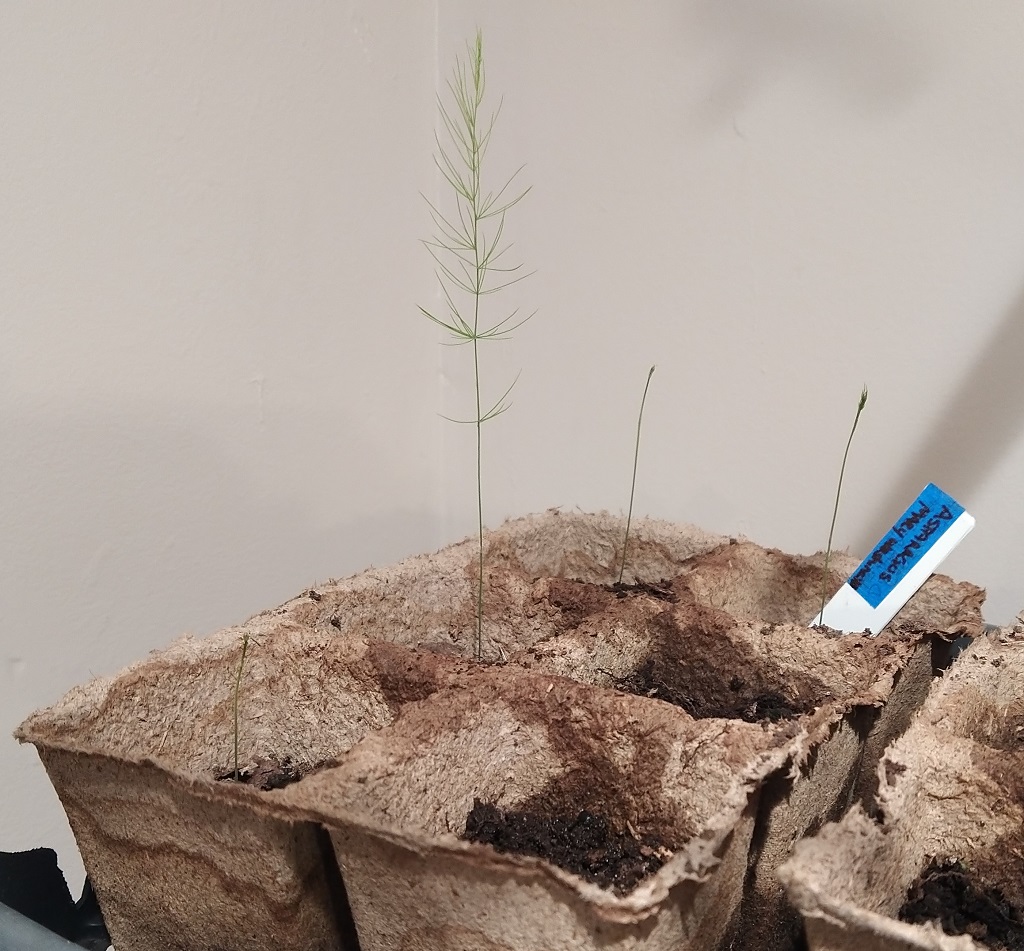
And then there’s the chicken chow — this is Bocking 14 comfrey. It doesn’t go to seed, but provides a high-protein leafy food for chickens and turkeys.
Yet Another Fence Comparison
We’re getting more fencing and, yet again, I find that different lengths have different price-per-foot (and not in the way I expected where longer rolls are more cost effective). Looks like we’ll be getting a bunch of 50′ rolls instead of a few 150′ rolls.
| Item | Length | Cost Per 1 | # Required | Total |
| GardenCraft | 50 | 16.99 | 12 | 203.88 |
| YardGard | 150 | 79.99 | 4 | 319.96 |
Fairy Eggs
The chickens we hatched earlier this year have started laying their first eggs — our first chicken to lay an egg (Queenington) laid a large egg, and the rest of our egg layers followed with fairly normal chicken-egg sized eggs. I didn’t know that it was common for chickens to start off laying small eggs (called fairy eggs) until we got the Bresse hens. They’re not great for hatching (really tiny chick incubates and often cannot even get out of the egg), but the eggs are perfectly edible. I think we’ll be making pickled eggs with this year’s tiny eggs.
New hatchling count
Started with 19 chicken eggs in the incubator — two didn’t develop and were removed. Three eggs haven’t hatched (three of those have pipped, but haven’t really gotten anywhere since). One little guy is really weak and still in the incubator so the other little ones don’t sit and lay on him. That means we’ve got a thirteen little chickens in the brooder. And, early next week, the ducks should start hatching.
